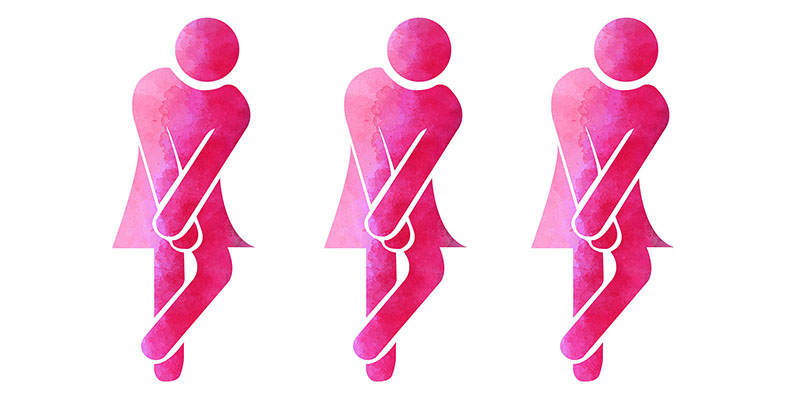
Urinary incontinence is a common problem in adults. About a third of women in the United States experience some form of incontinence or organ prolapse. Symptoms can be as little as a little “leakage” when you cough, sneeze or jump. But sometimes the problem is much larger, requiring protective garments during normal activities. The next time you are in a drugstore, note how much of one aisle is filled with Adult Incontinence products. There are two important things to know about this: 1) THIS IS NOT NORMAL. And 2) WE CAN DO SOMETHING ABOUT THIS.
The abundance of incontinence products is typical of our society and economy that develops an industry around trying to “fix” a problem, instead of trying to stop the problem from occurring in the first place.
Urinary incontinence in women after vaginal delivery is more prevalent than after Caesarean section. The prevalence of urinary incontinence 20 years after childbirth is 29% for Caesarean delivery, and 40.3% for vaginal delivery. Also, increased Body Mass Index (BMI) increases the risk of urinary incontinence.
Stress Incontinence: Women are more prone to incontinence due to the short urethra between the bladder and the urinary sphincter. The demands on the pelvic floor during pregnancy and childbirth can also weaken the pelvic floor muscles or contribute to organ prolapse, when one of the pelvic organs falls into a lower position than is normal in the pelvic basin. Men are more commonly bothered by incontinence after procedures to address prostate problems.
Physical therapy treatment addresses muscle control and strength of the pelvic floor, diaphragm, abdominal and hip muscles. Your physical therapist can evaluate these muscles and determine what exercises you need. It is important that your pelvic floor muscles work in concert with your diaphragm, abdominal and hip muscles. Simply doing classic Kegel exercises, commonly taught to stop the flow of urine, for pelvic floor muscle strength may not address the appropriate weakness. In some cases, your pelvic floor muscles are too tight to contract fully and you will need help loosening them before you strengthen them correctly.
Urge Incontinence: An overactive nervous system (or infection) can increase the reactivity of the bladder to the sensation of filling and cause a sensation of “urge” (“I have to go NOW!”). This often leads to frequent urination “just in case”, which leads to less tolerance to a full bladder in time, a vicious cycle. We use strategies like regular walking and diaphragmatic breathing to calm the sympathetic nervous system. We also use strategies to lessen your sensitivity to the sensation of a full bladder such as purposefully increasing time between urination, distraction when you feel the urge or using direct pressure on your pelvic floor muscles. At times medications may be needed to decrease sensitivity of the nervous system.
A useful tool to help to determine the factors that are important in your own incontinence is to use a bladder diary for 2-3 days to look at your food and fluid intake and the frequency that you urinate or have urinary leakage. Very commonly, we develop habits that increase our risk of incontinence and your diary will help your therapist to see patterns that you can change such as decreasing overall fluid intake, limiting or eliminating caffeine, alcohol or other foods and beverages that can irritate your bladder.
Functional Incontinence is the inability to navigate your way to the toilet due to another disability. We are happy to work with you to help you to overcome whatever physical limitations you have that are making it hard to take care of necessary daily tasks.